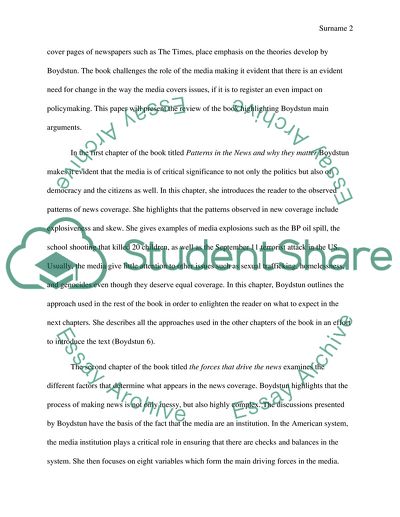Cite this document
(Analysis Making the News: Politics, the Media, and Agenda Setting Book Report/Review, n.d.)
Analysis Making the News: Politics, the Media, and Agenda Setting Book Report/Review. Retrieved from https://studentshare.org/social-science/1852964-book-review-making-the-news-politics-the-media-and-agenda-setting-by-amber-boydstun
Analysis Making the News: Politics, the Media, and Agenda Setting Book Report/Review. Retrieved from https://studentshare.org/social-science/1852964-book-review-making-the-news-politics-the-media-and-agenda-setting-by-amber-boydstun
(Analysis Making the News: Politics, the Media, and Agenda Setting Book Report/Review)
Analysis Making the News: Politics, the Media, and Agenda Setting Book Report/Review. https://studentshare.org/social-science/1852964-book-review-making-the-news-politics-the-media-and-agenda-setting-by-amber-boydstun.
Analysis Making the News: Politics, the Media, and Agenda Setting Book Report/Review. https://studentshare.org/social-science/1852964-book-review-making-the-news-politics-the-media-and-agenda-setting-by-amber-boydstun.
“Analysis Making the News: Politics, the Media, and Agenda Setting Book Report/Review”, n.d. https://studentshare.org/social-science/1852964-book-review-making-the-news-politics-the-media-and-agenda-setting-by-amber-boydstun.


